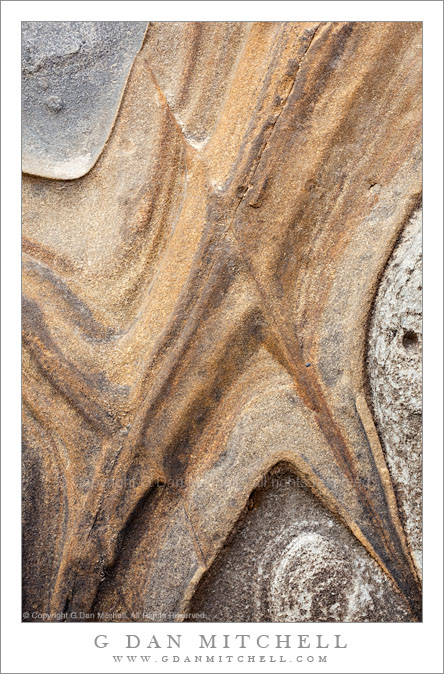
Harbor Seal Family. Point Lobos State Reserve, California. April 26, 2009. © Copyright G Dan Mitchell – all rights reserved.
A family trio of harbor seals rests on an offshore rock at Point Lobos State Reserve, California.
I photographed this family group (at least they sure acted like a family!) on an offshore rock just above the surf line on the late April weekend when I almost had the whole of Point Lobos State Reserve to myself. (I wrote about this earlier – a marathon had closed the coast highway and almost no one else was in the park.) I think the seals were a bit less wary than they might be because of the very small number of people in the park – actually, I was the only person near them for a good long time. I had a great chance to observe them uninterrupted, and from two slightly different locations – after shooting from this spot I moved far to the right where I could shoot back at the far side of the rock.
I found it interesting that they were very aware of my presence and seemed to pay more obvious attention to me than I have seen in the past. The lighter color seal on the right stared right at me for long periods of time on several occasions, even though I was quite a distance away and standing nearly motionless. Once or twice all three gazed my direction. I wasn’t sure who was observing who! The darker seal on the left seemed to be the least active, only occasionally rolling around and scratching the back (yes, they do this!) of the others, especially the smaller one in the far middle in this shot.
I’m still working out the best ways to photograph creatures like these. Learning their habits a bit helps, as does arriving at the right time – in terms of season, time of day, weather, and the good fortune of being there on an uncrowded day at Point Lobos. I’d like to get shots from a lower angle, but this can be difficult. I think the seals are much less likely to be close to the shore in such places.
I have a very large number of photographs of this group, and I may post more eventually.
This photograph is not in the public domain. It may not be used on websites, blogs, or in any other media without explicit advance permission from G Dan Mitchell.
keywords: harbor, seal, young, parents, family, eyes, three, rock, shore, water, seaweed, kelp, flipper, white, gray, brown, ocean, sea, coast, wildlife, nature, whiskers, spring, rest, lie, group, point lobos, state, reserve, park, california, usa, monterey, peninsula, carmel, stock

